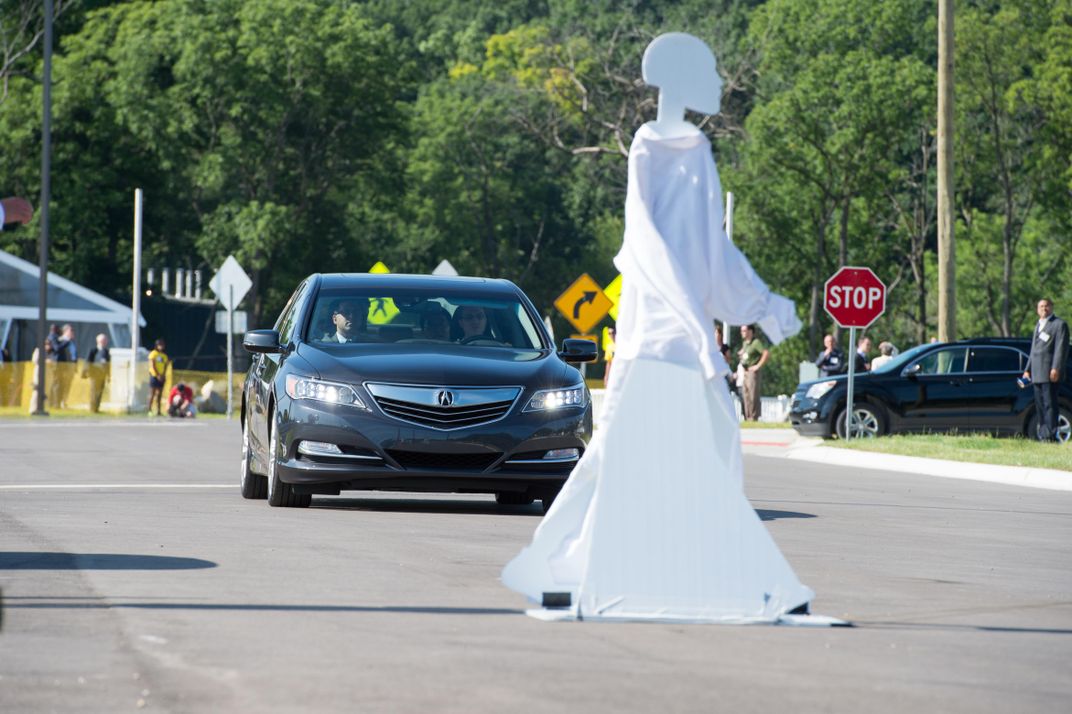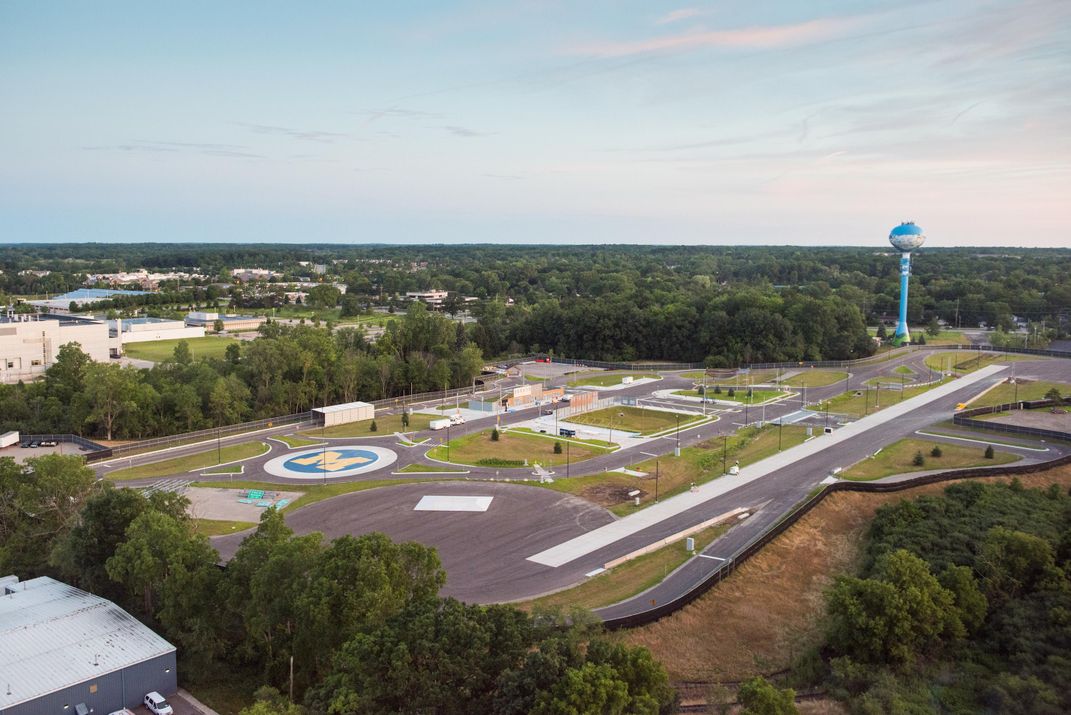This Mock “City” Is a Testing Ground For Driverless Cars
The University of Michigan’s Mcity is a 32-acre challenge course for connected and automated vehicles
/https://tf-cmsv2-smithsonianmag-media.s3.amazonaws.com/filer/85/77/857777da-696b-4758-b3cb-70e1da0b6628/mcity4.jpg)
The road is an unpredictable place. Motorcycles zoom up in your blind spot. Pedestrians dash across the street against the crossing signal. Cars ahead of you brake for squirrels, and street markings fade.
Human drivers react to these things, though not always perfectly. But what about driverless vehicles?
A new facility at the University of Michigan aims to recreate these real-world conditions for connected and automated cars to encounter. Opened in July, Mcity is a $10 million, 32-acre mock city on the university’s Ann Arbor campus, built as a challenge course for these kinds of vehicles. “Connected” vehicles can communicate with each other and elements of the infrastructure. A fleet of connected vehicles could potentially warn each other about upcoming road conditions, such as ice on a stretch of highway or a car running a red light ahead. “Automated” vehicles have certain automated functions, such as automatic breaking, acceleration or steering. A vehicle could be connected, automated, or both. A completely automated car is what’s often called “driverless.”
Mcity, with moveable building facades designed to resemble downtown Ann Arbor, is riddled with the kinds of obstacles drivers face every day. There are paved roads, gravel roads and brick roads. There are small and large roundabouts. There are numerous train and pedestrian crossings. There’s a four-way stop with less-than-perfect views, and spots, of course, call for the onerous task of parallel parking.
There are also features specifically designed to challenge connected and automated cars, which rely on Wi-Fi and satellite signals. A heavy tree canopy makes signals spotty, while a simulated underpass blocks them completely. A metal bridge surface strains cars’ radars and image processing sensors. Road signs are sprayed with graffiti, making it difficult for sensors to read the wording beneath.

Mcity even has a resident, a robot pedestrian called Sebastian who crosses the road without looking both ways. So far, there have not been any accidents on the premises.
The fake city is part of the university’s Mobility Transformation Center (MTC), launched in 2013 to “accelerate the large-scale deployment of connected and automated vehicles on public roads,” says Peter Sweatman, the center’s director.
The MTC has already put nearly 3,000 connected vehicles on the road in Ann Arbor and hopes to increase that number to 9,000 over the next few years. These are vehicles belonging to local citizens, who have volunteered to have their cars, trucks and motorcycles retrofitted with connective technology. This involves a GPS and short-range communication antenna placed on a car, which provides the driver with information about what’s going on around them via a display unit inside the vehicle. A motorcycle approaching in a driver’s blind spot shows up as an icon. A vehicle braking several cars ahead on the highway will activate a warning to let the driver know to stop soon.
“The safety benefits [from connected vehicles] will be tremendous,” says Sweatman, who adds that preliminary data shows the technology could help avert some 80 percent of fatal car crashes.

Mcity will likely be a testing ground for more advanced levels of automation as the technology develops, Sweatman says. He gives as an example the 2017 Cadillac, which will have what the company calls “super cruise,” an automated cruise control allowing drivers to take their hands off the steering wheel, their feet off the pedals and their eyes off the road during highway driving.
The University of Michigan and the Michigan Department of Transportation are funding Mcity. The MTC is a public/private partnership between the university, the government and various industry members. Any organization can apply to use Mcity, though priority will be given to MTC partners and University of Michigan faculty and students. Partners include auto companies, such as Ford, GM, Toyota and Honda; insurance companies, like State Farm; and Verizon and other communication companies.
“It takes a village to develop this kind of technology, and no one company or industry has all the answers when it comes to how this will play out on the roadway,” Sweatman says.
/https://tf-cmsv2-smithsonianmag-media.s3.amazonaws.com/accounts/headshot/matchar.png)


/https://tf-cmsv2-smithsonianmag-media.s3.amazonaws.com/accounts/headshot/matchar.png)